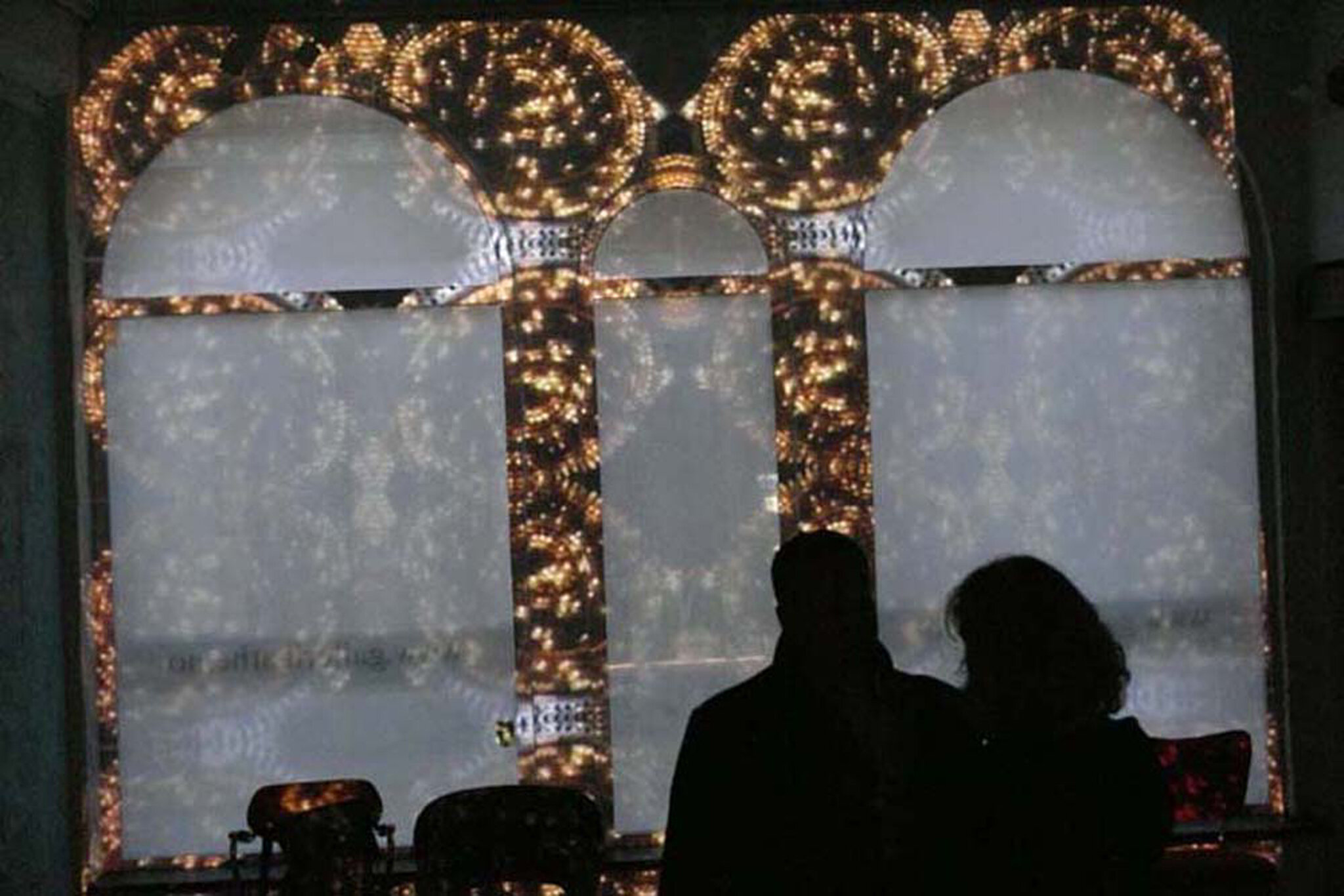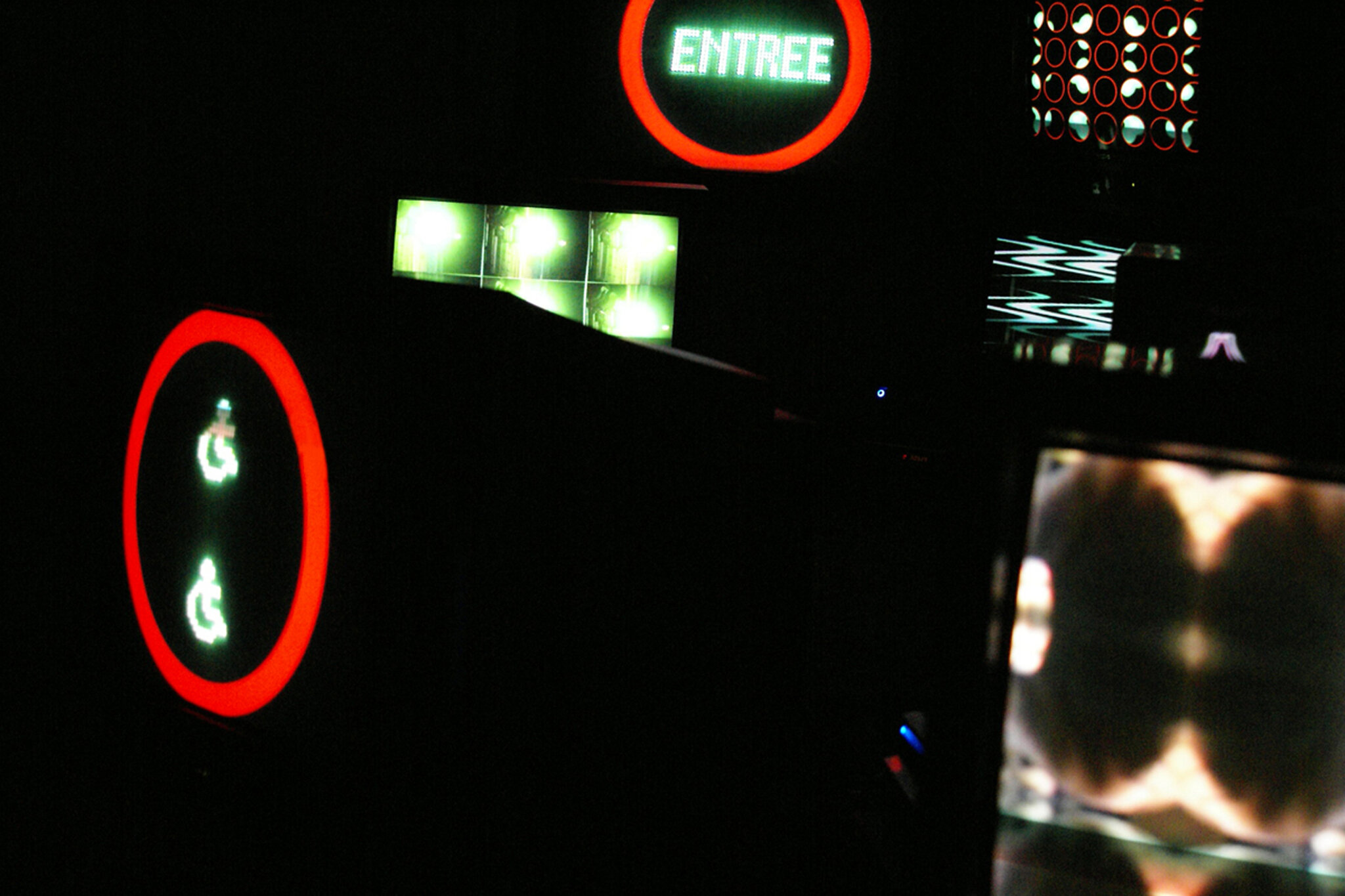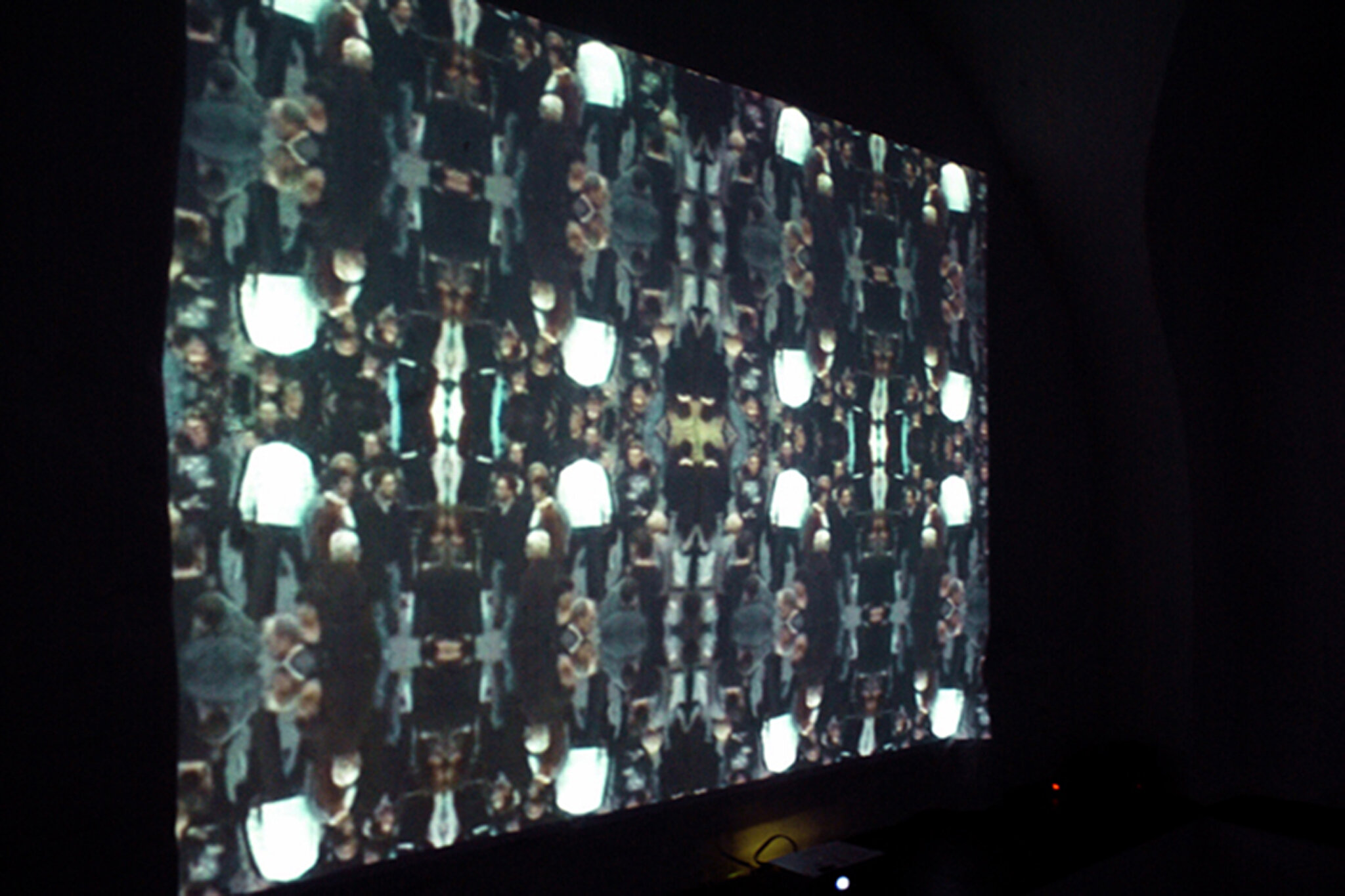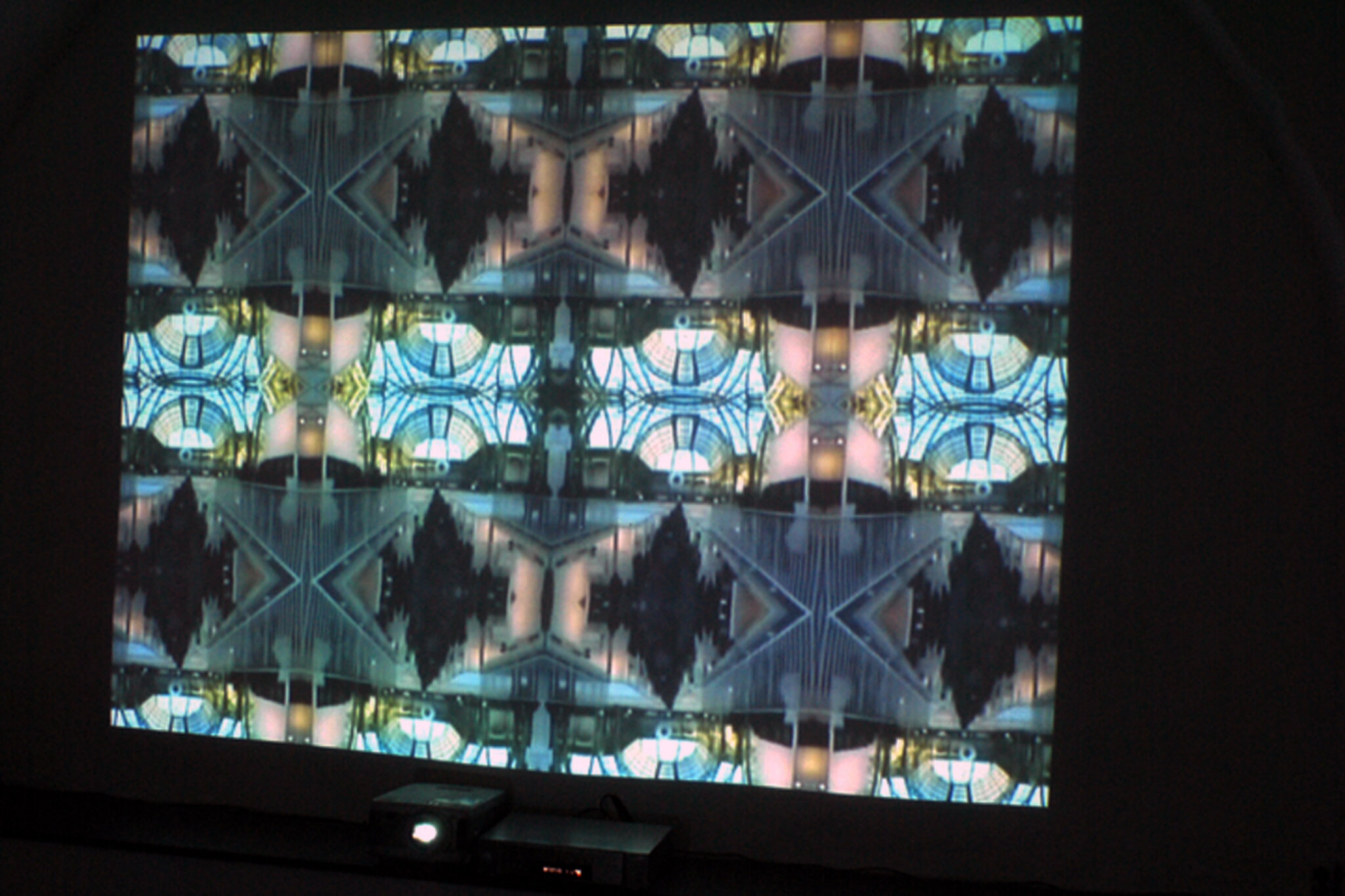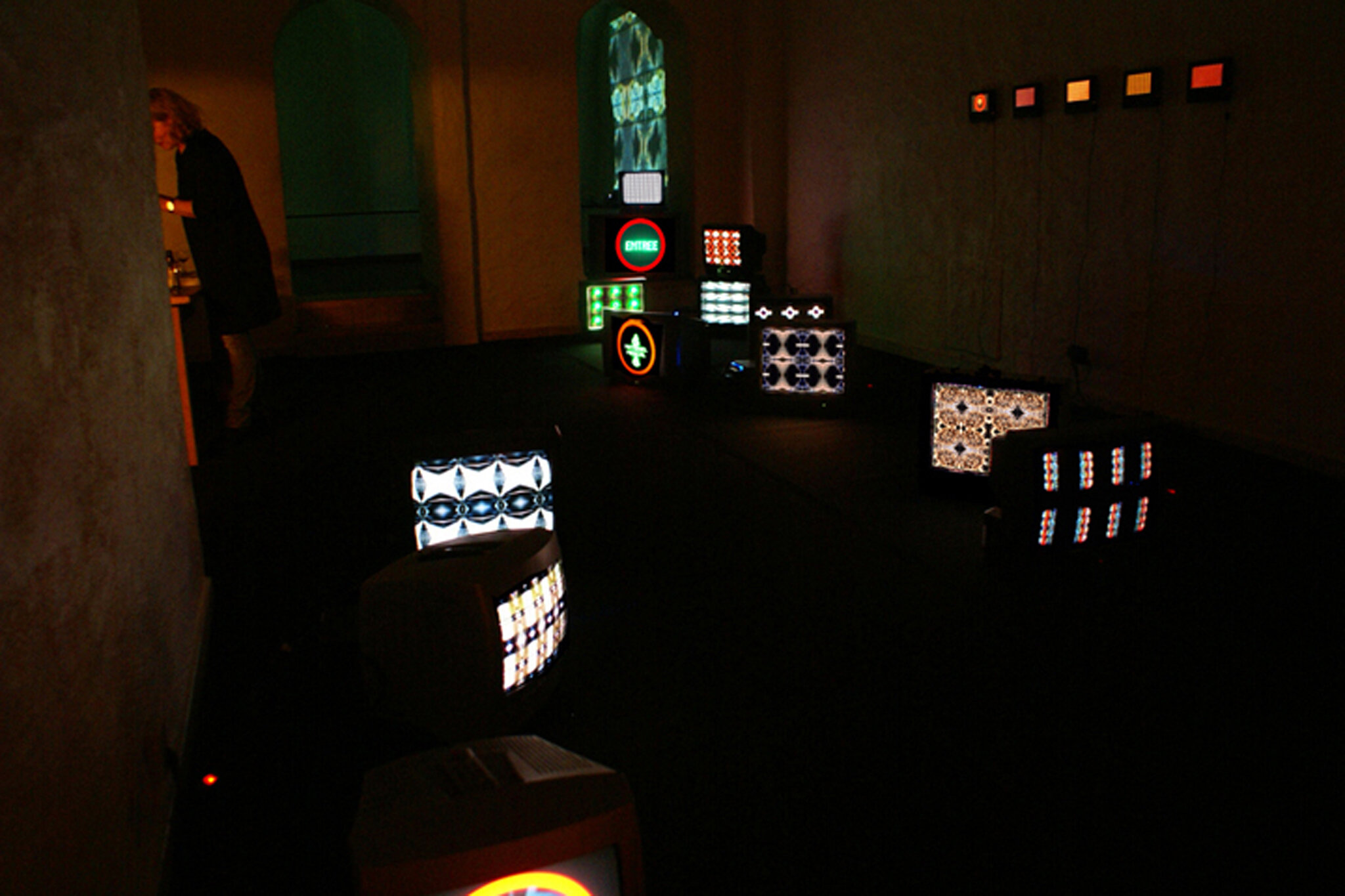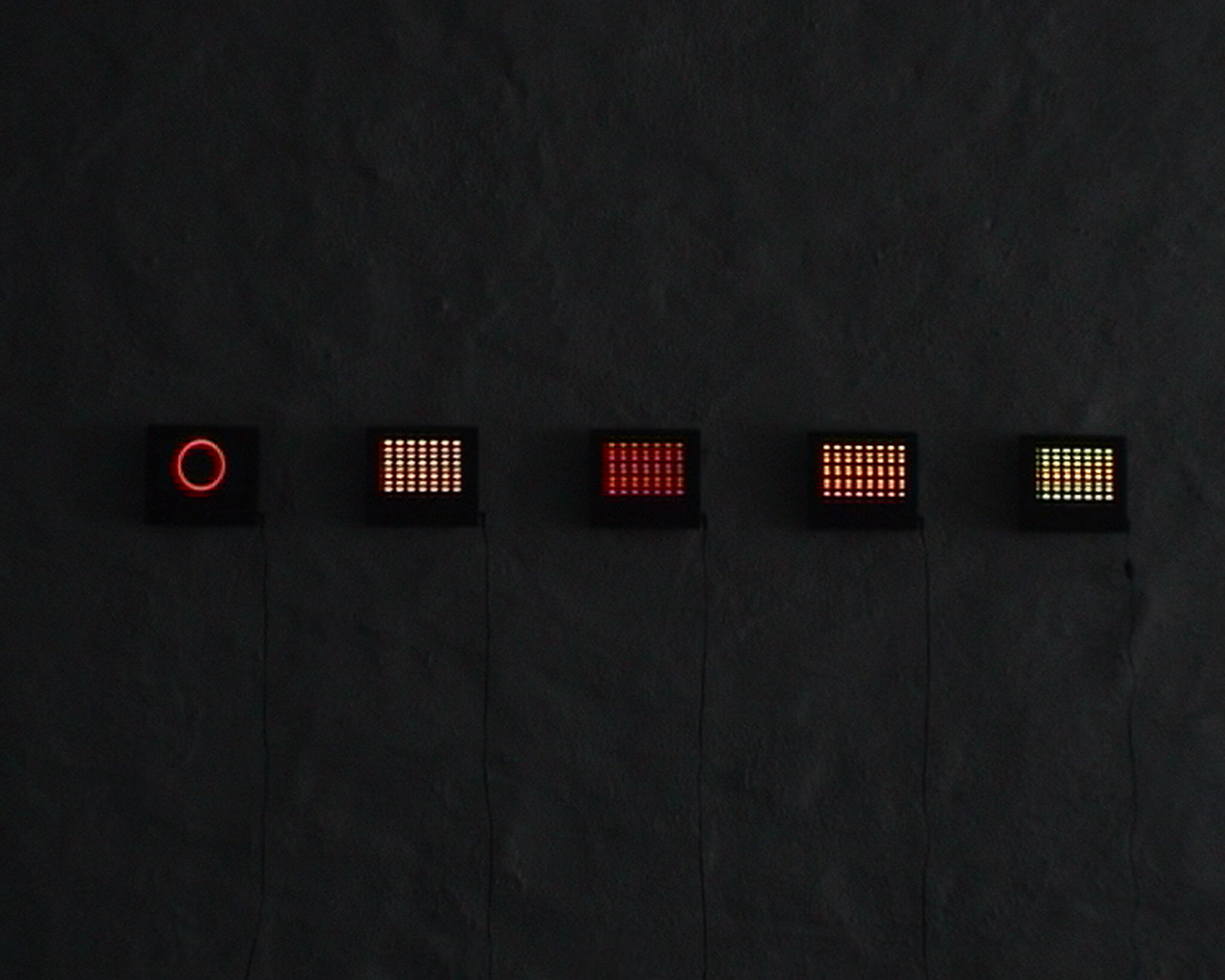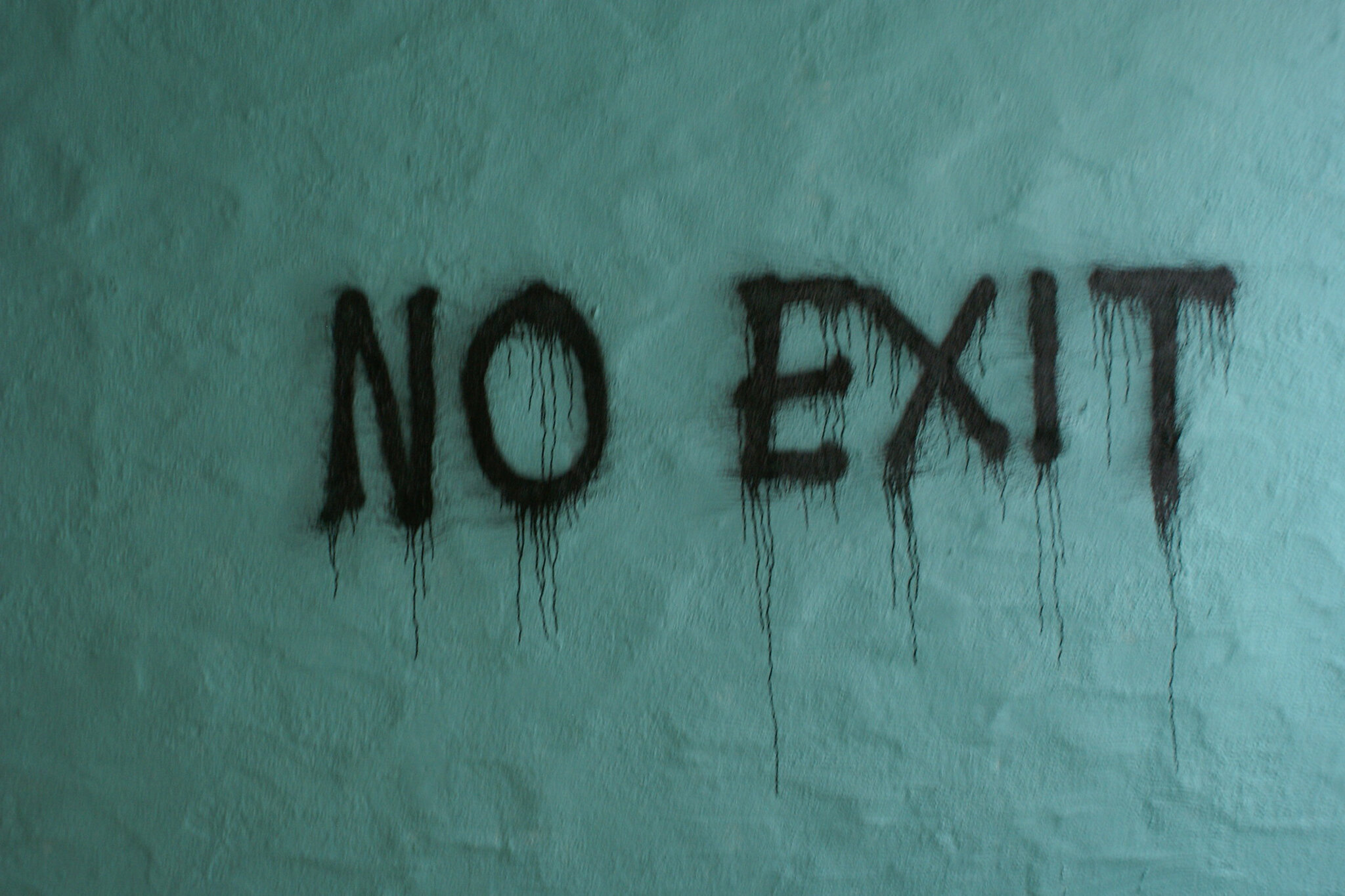Installation with 18 video loops on Tv monitors on floor and 5 DVD 7´ players on wall. 3 lage scale projections on wall and window. Painted text on wall. 7 vintage chairs.
Exhibition was supported by Vederlagsfondet, Bergen City Council, BEK & Carlsen i Dreggen. Special thanks to Tommy Olsson & Marianne Gathe.
Review kunstkritikk.no by Susanne Christensen
- ´Men velbehaget kan ikke vare ved, og det gør det sandelig heller ikke, for jeg slås af øjeblikkelig krisestemning så snart jeg sætter foden inden for på Galleri Gathe. «No exit» står spraymalet med sort på en angstgrøn væg. Jeg sætter mig definitivt på den forkerte stol, jeg bilder mig ind at jeg er tilskuer, men projektoren er vendt imod mig, og det hvide, flimrende lys trænger sig migrænefremkaldende på. Alle rimelige sociale strategier truer med at kortslutte, men jeg skimter en tredje position, en stol som står ude til siden, og herfra har jeg overblik over den fælde jeg netop gik i: Her kan jeg se på tilskueren, og se at hun indgår i et kunstværk, med mønstre krybende over huden.
Da jeg er mere rolig kan jeg endelig rette opmærksomheden indad i rummet hvor utallige uddaterede fjernsynsapparater står opstablet og giver en brummende, hvid støj fra sig og en umiskendelig lugt af lo-fi teknologi. Bjørg Tarangers værker fremviser en blanding af let diktatoriske vejskiltagtige røde cirkelmønstre (gestik) og mere diffuse, kalejdoskopiske mønstre (tekstur) i bevægelse. Mønstrene – lad os bare kalde dem urbane mosaikker – ser umiddelbart abstrakte ud, men består ved nærmere eftersyn af byrum og menneskemængder, en slags omskrivninger af byen som både rydder op i kaos og forstærker det: Der er noget dehumaniserende i den æstetiske organisering af menneskemyldret, et ubehag vækkes. Den magt jeg tildeles (jeg overskuer byen gennem utallige overvågningskameraer) er det døde øjes magt: I er mennesker, men for mig er I bare dekorative mønstre.´-
Off the grid, text on Bjørg Tarangers video project URBAN MOSAIC by Tommy Olsson
We can safely say that mosaic has a long history behind it. Video has a somewhat shorter history but it’s in place. Even mosaic’s presence in video media has a history, it might even play an active role in the media’s origin, the electronic picture is after all based on small points. Common to all histories is a labyrinth of alternative courses, parallel discussions and things that never lead anywhere. Bjørg Taranger’s work can be understood as a meeting place for all these components or perhaps some kind of transit hall? Because when we access the material and examine the components we discover what it’s made of. These are video loops, often only a few seconds in duration, treated by a variety of filters to apply pauses and vibrations in a kaleidoscopic, flashy, visual explosion. What happens when you put something in a loop – and this is the magical hold everyone instinctively understands – is that you in a way sabotage our comprehension of time as a linear progression. I will go as far as to say that you actually interfere in time itself – you don’t stop it but rather mess around with the continuity of it and thus apply incalculable effects.
I can supply a couple of examples, both of which are coincidently neighbour clashes. Some of my acquaintances maintain a well above average interest in the occult and I consulted one of them for advice on a very charged situation with a particular neighbour. This neighbor had taken to enthusiastic hammering on the plumbing if I as much as breathed in my apartment and I was advised to record the sound of the hammering, and play it endlessly every time I went out. It wasn’t even necessary to leave it on an especially high volume, it just had to sit there hammering away in its loop. I didn’t particularly like this idea however, the neighbor was a grandiose snorer and I managed to record some of the snoring and let it play in a loop when I went out. It took less than a week before the neighbor stopped me on the stairs and apologized, informing me of a mega-migraine. Afterwards all was quiet and peaceful again. As a result I began to experiment a little. It so happened that the back yard was frequently occupied by a gang of rowdy people who practiced summer annoyance. I managed to record an exceptional sequence of 45 minutes from my bedroom window and then played it the following day out of the same window – again on no especially high volume. They were nowhere to be seen for the rest of the summer. What happens is one simply creates a hole in time and it’s unpleasant for whom it ought to be unpleasant.
In the context of Bjørg Taranger’s video work however, my personal experimentation with making holes in time constitutes only a fraction of the rationale. It’s equally important to note that many, if not all of these short sequences revolve around the active use of one or another form of transport. We may, if we want to, understand it as a body of fragmentary impression from a long journey but since I’m in the mood for the magical, it ought to be understood as a wisely selected apparatus in a work of poetry aimed at a precise destination. Because the train never leaves the station – it starts all over again from where it began two seconds earlier, and does so on a screen filled by the same times thirty. The most important and most striking – the first we notice as an observer – is that the pattern itself emerges as a consequence of this interference. Hypnotic and surely risky for epileptics, it stands with Brion Gysin´s Dream machine in trance-inducing mode.
Therefore this is definitively a meeting place – something supported by other short sequences from a shopping centre or a train station – for different stories and ideas. However it’s also a random location; a place for transit, because even with all these signs of a journey, it’s static and showers us with flicker, and it’s exactly here that the journey begins. Through interfering in the moment with such consequence and consistency, Bjørg Taranger opens the door in Harry Potter fashion to another world that we know fuck-all about. (I imagine however that all similarity ceases at this point, there are no dragons and princesses lurking anywhere here.) As a starting point for investigating one’s own inner space, this is both a friendly and generous manoeuvre. The observer knows what the signs mean and that it’s their own substance, their own memory that makes these associative elements functional. The captain welcomes you on board. This journey takes either 2 hours and 50 minutes or it never, ever ends. We’ll see.
Tommy Olsson,Bergen 27. September 2009
Translated from Norwegian by Gillian Carson
